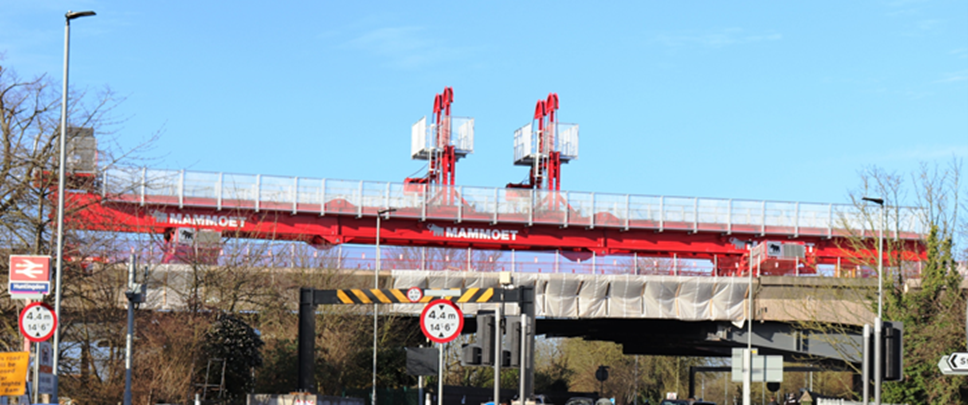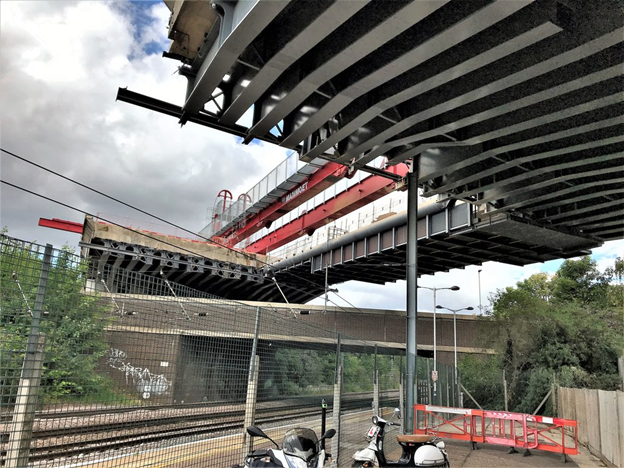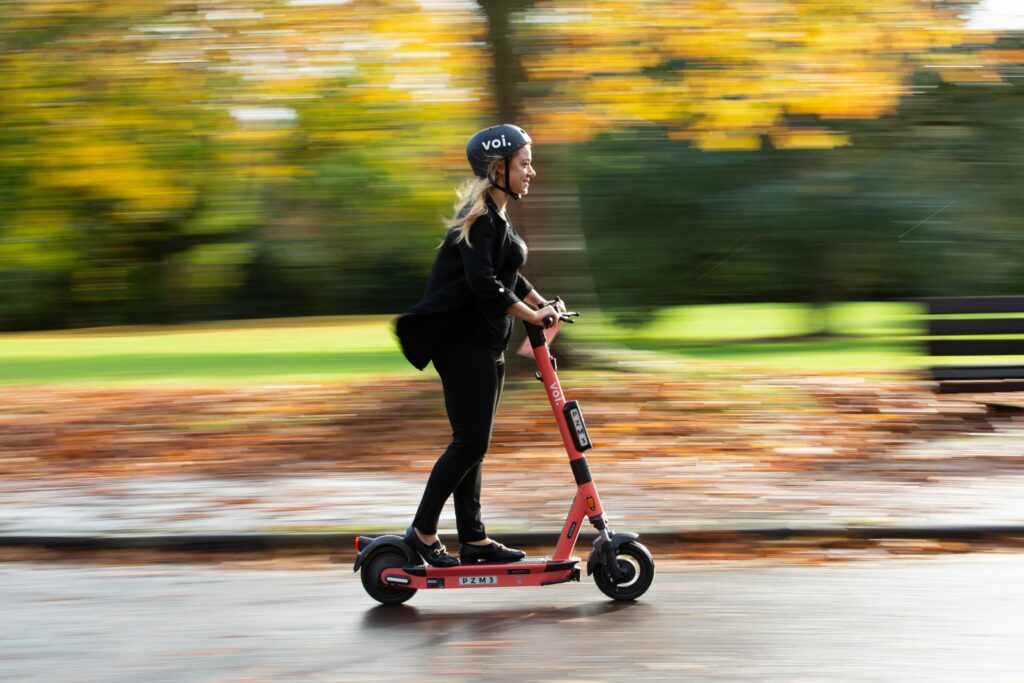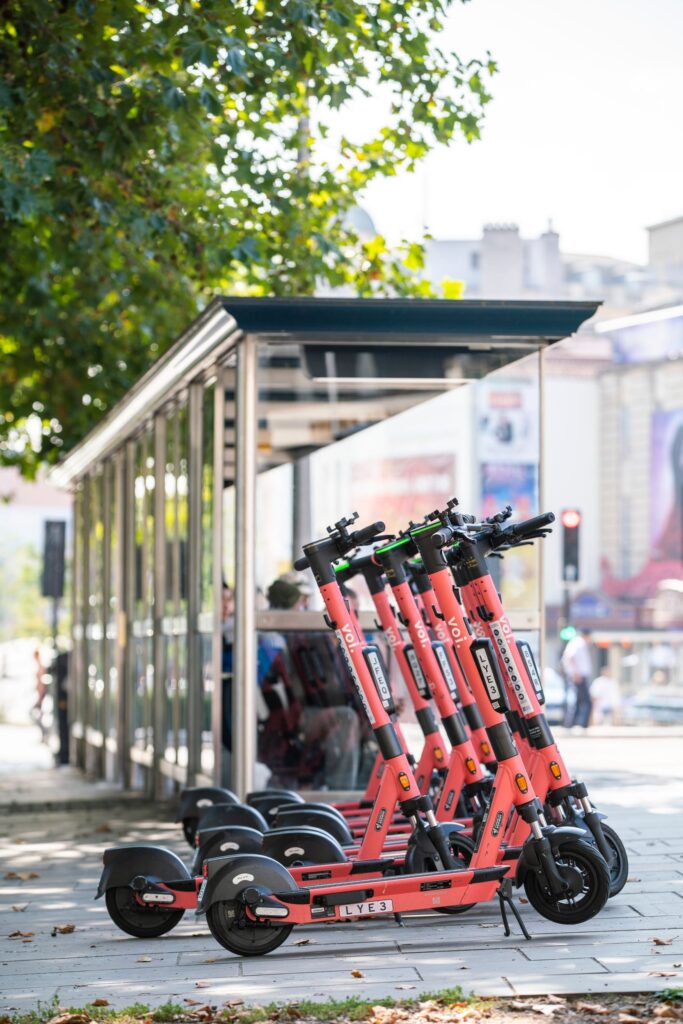The post Deep Dive with Doug Bellomo appeared first on Blog.
]]>This week, we are highlighting Doug Bellomo, a flood risk management expert from our global Water business line, based in Arlington, Virginia. Doug shares how he and his team conducted a study that demonstrates the lifesaving and economic benefits of disaster resilient building codes.
Doug specializes in flood risk management and emergency services. Following his previous tenure with the Federal Emergency Management Agency (FEMA) and the U.S. Army Corps of Engineers (USACE), he moved to AECOM to pursue his interest in private sector innovations and solutions that help shape public policy and create more resilient communities, businesses and natural landscapes. Prior to joining us five years ago, he oversaw the execution of several federal programs including FEMA Risk MAP, National Dam Safety Program and FEMA’s Mitigation Planning Operations with an average annual budget of $260 million.
Tell us about a project that has impacted or been a major highlight of your career. How is it delivering a better world?
What drew me to AECOM was its mission of delivering a better world. I researched the company, talked to people, and decided AECOM would be a good fit for me. Public service, flood risk reduction, building community resilience and delivering positive environmental and social outcomes have always been a big part of why I do what I do — and that’s also the case for so many of my colleagues at AECOM.
Having witnessed firsthand the devastating impacts of flooding in the aftermath of Hurricane Katrina and Superstorm Sandy, I am grateful to be able to play a part in promoting the value of disaster-resistant building codes. In 2020, I worked on a FEMA project called “Building Codes Save: A Nationwide Study of Loss Prevention,” which demonstrates how disaster-resilient building codes can prevent the direct losses — economic harm and human suffering — often caused by three types of natural hazards that are earthquakes, flooding and hurricane winds. It compares average annual losses between buildings designed with higher codes versus minimum codes. AECOM, as part of the COMPASS Joint Venture (JV), played a pivotal role in managing the work and developing the analytical framework, which was based on a database of 18 million buildings, the hazard frequency in each locality, and the type of building code in effect at the time. This work resulted in user-friendly materials with actionable guidance to help emergency management professionals, policymakers and others adopt modern building codes and avoid future losses.
Having witnessed firsthand the devastating impacts of flooding in the aftermath of Hurricane Katrina and Superstorm Sandy, I am grateful to be able to play a part in promoting the value of disaster-resistant building codes. This work resulted in user-friendly materials with actionable guidance to help emergency management professionals, policymakers and others adopt modern building codes and avoid future losses.”
What was a key challenge you/your team faced while working on this project? How did you solve it?
The technical side was difficult. There is no detailed national data set of adopted building codes. We had to comb through various resources to make sure the data accurately represented which elements of codes were adopted. We also experienced a lot of challenges around organizing the data sets, making sure the data was aligned and distilling credible results at the end. We worked closely with the client to effectively meet their objectives in a technically sound manner, despite a variety of constraints.
The COMPASS JV team and I collaborated with AECOM communications specialists to help FEMA develop a brochure of the findings. Despite the benefits of resilience outweighing the costs of resilient construction, we discovered that as much as 65 percent of U.S. counties do not have modern building codes.
We also sought to predict how hazard resilience may change over time. With an expected average of 577,000 new buildings per year, approximately 13.9 million buildings will be added to the U.S. inventory between 2016 and 2040. We projected that about 70 percent (approximately 9.7 million) will be built to international codes (I-codes) or similar codes. Based on results of the Average Annualized Losses Avoided (AALA) — a risk-based metric —the cumulative savings will be $132 billion. That number would grow significantly if there was broader adoption of modern codes.
Since the study’s publication, the federal government (through its Federal Flood Risk Management Standard) and the American Society of Civil Engineers have continued the push to improve resilient building design. It is really exciting to see the continuing conversation around the importance of building codes.
The COMPASS JV team and I collaborated with AECOM communications specialists to help FEMA develop a brochure of the findings. Despite the benefits of resilience outweighing the costs of resilient construction, we discovered that as much as 65 percent of U.S. counties do not have modern building codes.”
How has AECOM enabled you and your teams to cultivate the expertise needed to deliver this project and future work like it?
I have always been impressed with AECOM’s breadth of experts and capabilities, including the architects who take concepts and present them in much more compelling ways than the tables and charts engineers often use. As an engineer with a flood hazard and risk management background, having access and opportunities to learn from experts in other fields has been a great way for me to develop professionally. I also learned a lot from our communications experts during this study. I am a big fan of these experts because they help us to simplify complicated information and make it more accessible to the public and decision makers.
As an engineer with a flood hazard and risk management background, having access and opportunities to learn from experts in other fields has been a great way for me to develop professionally.”
The post Deep Dive with Doug Bellomo appeared first on Blog.
]]>The post Deep Dive with Josh Jones appeared first on Blog.
]]>This week, we are highlighting a program manager from our Transportation business in Canada and exploring how he and his team delivered a safe, sustainable and innovative transit system in the City of Edmonton. Josh is the project manager for the Valley Line Light Rail Transit (LRT), currently western Canada’s largest LRT owner’s engineer assignment. In this role, he leads a team of nearly 20 multi-disciplinary subconsultants and a specialized risk and claims preparedness team throughout the preliminary engineering, procurement, design and construction phases.
Josh is an accomplished program manager with more than 20 years of experience in construction, alternative project delivery, and management of large-scale infrastructure projects. He is known for his exceptional leadership skills and his ability to effectively bring together consulting teams, public entities and stakeholders to deliver complex projects. With more than 10 years of valuable experience in developing and executing complex public-private partnership (P3) projects, Josh has a strong foundation of field work and integration, particularly in urban environments where he has successfully navigated the unique challenges of rapidly growing city landscapes.
Tell us about a project that has impacted or been a major highlight of your career. How is it delivering a better world?
One of the standout moments in my career was riding as a paying passenger on the new Valley Line LRT in Edmonton — a project I’m incredibly proud to have worked on. This LRT isn’t just a new transit line; it’s a game-changer for the city.
By decreasing car dependency across the City of Edmonton, our work on the Valley Line LRT is reducing carbon emissions while preserving green spaces along its route. This new line is also improving the quality of life for people by increasing access to essential services and creating safer, more connected communities. At the same time, it has created new jobs for the community and, in the long run, will benefit commuters financially while potentially boosting property values and local business activity. Critically, we also hit the mark with our client by delivering the project on time and within budget thanks to the success of the P3 process. This project is helping to build a better, more sustainable future for Edmonton — it’s been a highlight of my career to be part of it.
By decreasing car dependency across the City of Edmonton, our work on the Valley Line LRT is reducing carbon emissions while preserving green spaces along its route. This new line is also improving the quality of life for people by increasing access to essential services and creating safer, more connected communities.”
What was a key challenge you/your team faced while working on this complex LRT project? How did you solve it?
One of the biggest challenges we faced while working on the Valley Line LRT project was that it was the City of Edmonton’s first P3 project. Navigating this new delivery model required a lot of collaboration and innovation. We relied heavily on AECOM’s alternative delivery experts to guide the city through the complexities of the P3 process and bring their vision to life.
We adopted a “one-team” approach, setting up a joint project office where city staff and AECOM leads worked side by side. We even created a buddy system to foster close collaboration, which was key to our success. This approach allowed us to tackle issues in real-time and keep everyone aligned on project goals.
During the design and construction portion of Phase 1, the city decided to expand the system by 100 percent. Doubling a system that wasn’t even finished brought a whole new set of challenges, particularly in procurement and technical aspects. Having a shared space to collaborate in real-time made all the difference. We struck a balance between performance and prescriptive requirements that aligned with the city’s objectives, while leveraging the benefits of a design-build approach.
COVID-19 also created very unique challenges, especially during procurement. I’m very proud of how our team quickly pivoted to a virtual environment and continued to successfully meet the city’s procurement requirements despite the obstacles created by the pandemic.
There were definitely breakthrough moments — seeing how our innovative solutions and close teamwork helped navigate uncharted waters was incredibly rewarding. It reinforced the importance of collaboration, flexibility, and a shared vision in overcoming even the toughest challenges.
We adopted a “one-team” approach, setting up a joint project office where city staff and AECOM leads worked side by side. We even created a buddy system to foster close collaboration, which was key to our success. This approach allowed us to tackle issues in real-time and keep everyone aligned on project goals.”
How has AECOM enabled you and your teams to cultivate the expertise needed to deliver Valley Line LRT and future work like it?
AECOM has been instrumental in helping me and my team develop the expertise we needed to successfully deliver the Valley Line LRT project and to prepare for future work. One of the key advantages has been our ability to draw on our global network of experts. Early on, we were able to bring in specialized knowledge from around the world, giving us the ability to support our local clients in ways that very few other firms can. Accessing AECOM’s global expertise has become even more streamlined over time, and there’s a genuine willingness across the organization to collaborate and share knowledge.
This project also provided opportunities for skill development, not just for me, but for the entire team. I was able to mentor team members to broaden their skillsets and prepare them for future challenges. That mentorship was as worthwhile for me as it was for them because it strengthened our team and helped us deliver a better outcome for our client.
Working so closely with the client on this project also gave us deeper insights into their evolving needs and emerging industry trends. This hands-on experience has been fundamental in enabling us to better understand and anticipate our future clients’ needs.
AECOM’s global support and our collaborative work environment have enhanced our ability to deliver on this project while also setting us up for continued success in the industry.
One of the key advantages has been our ability to draw on our global network of experts. Early on, we were able to bring in specialized knowledge from around the world, giving us the ability to support our local clients in ways that very few other firms can.”
How has this experience shaped your approach to future work and expanded your career at AECOM?
The Valley Line LRT project has significantly shaped my approach and broadened my career. Transit projects are inherently complex and varied, which gave me the chance to collaborate with a diverse group of people and tackle challenges from multiple angles. This experience reinforced the importance of adaptability, teamwork and innovation in delivering successful outcomes.
One of the key lessons I’ve learned is the value of partnering with clients and stakeholders. Understanding their needs and working alongside them from the start has proven essential in navigating the complexities of large-scale projects. This approach has prepared me to take on new challenges with confidence, knowing that AECOM has the expertise and resources to support me.
The experience I gained on the Valley Line has also created opportunities for me to contribute to similar projects around the world. It’s incredibly rewarding to apply what I’ve learned to help shape the future of urban transit in other cities. AECOM’s commitment to addressing urban growth challenges while meeting ESG goals aligns perfectly with my own values, and I’m proud to continue supporting projects that make a meaningful impact.
This project has not only expanded my career but also reinforced my belief in the work we do at AECOM. I’m excited to take these lessons forward as we continue to tackle the complex challenges of urban development.
One of the key lessons I’ve learned is the value of partnering with clients and stakeholders. Understanding their needs and working alongside them from the start has proven essential in navigating the complexities of large-scale projects. This approach has prepared me to take on new challenges with confidence, knowing that AECOM has the expertise and resources to support me.”
Learn more about the Valley Line LRT project and how it is making a positive impact for the City of Edmonton.


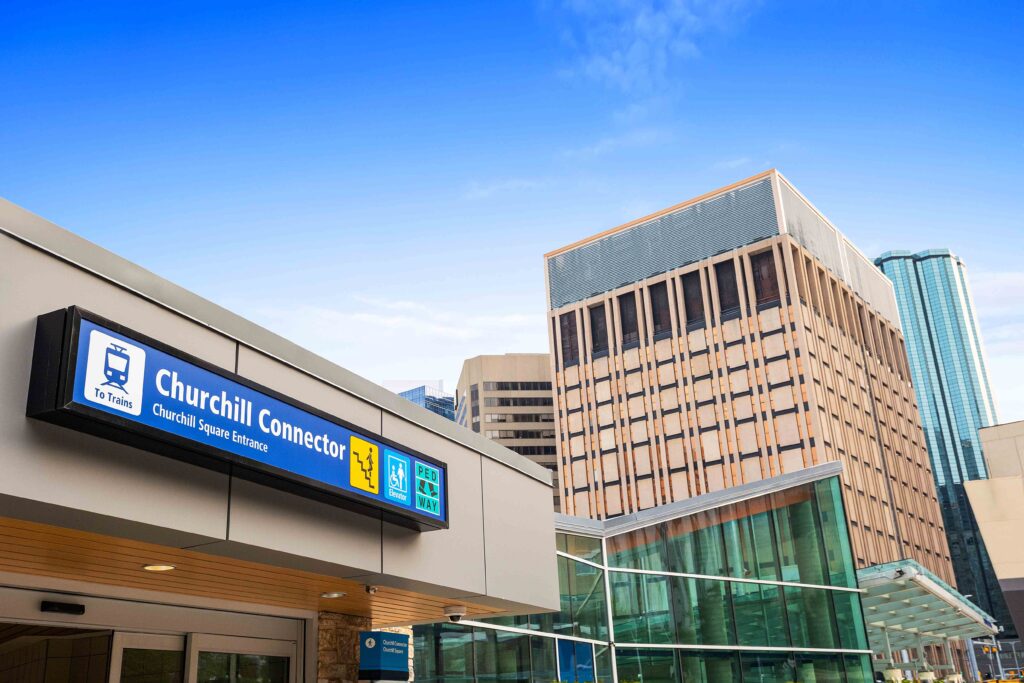

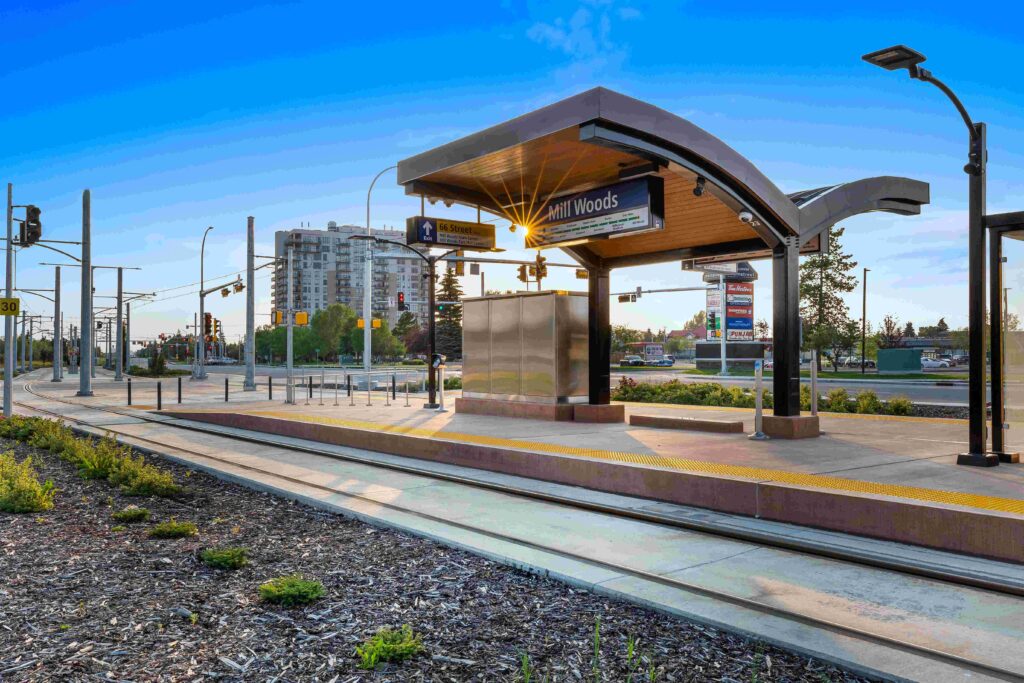
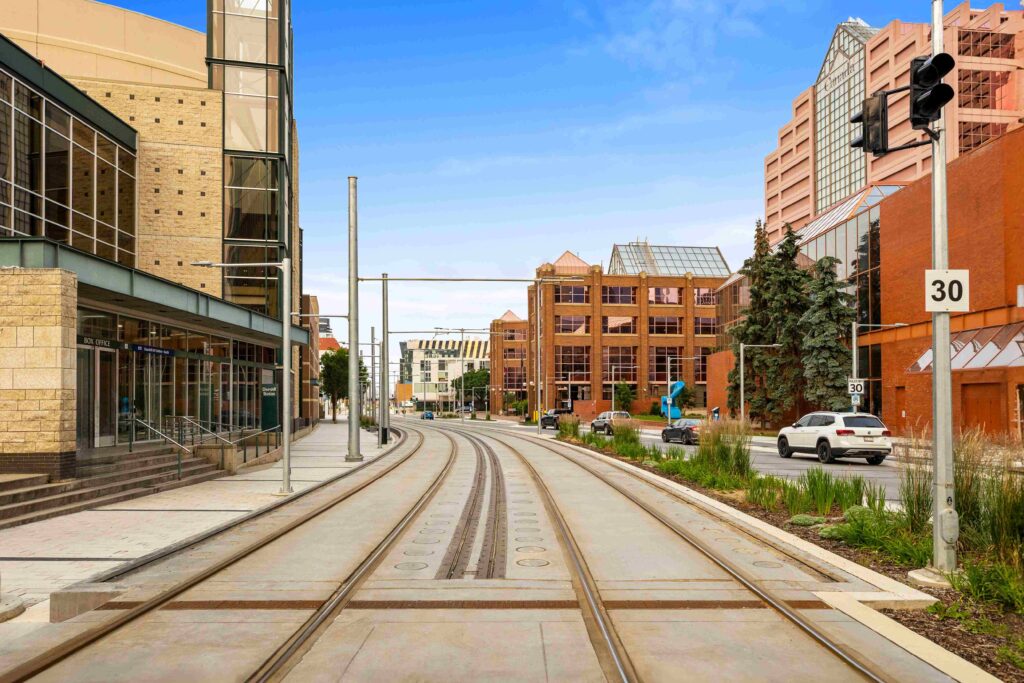

The post Deep Dive with Josh Jones appeared first on Blog.
]]>The post Deep Dive with Ana Moreno appeared first on Blog.
]]>This week, we are highlighting Ana Moreno, a social impact assessment lead from our Environment business in Mexico. Ana shares how she and her team are evaluating and mitigating the social and environmental impacts of an oil and gas client and discusses the strategies recommended to introduce sustainable development for the local communities.
Ana is a social anthropologist with over 15 years of experience in social consulting in Mexico and Latin America, specializing in social and sustainable development. She is currently a candidate for a master’s degree in Sustainable Development. Additionally, she collaborates with the environmental team on due diligence and compliance evaluations with the Equator Principles, the International Finance Corporation, and the World Bank. She is also certified as a Social Audit in SA8000.
Tell us about a project that has been a major highlight of your career.
I’m currently completing a social impact assessment and managing social and sustainability actions for a client from the oil and gas industry. Through this project, we’re evaluating and mitigating the social and environmental impacts of the client’s operations. We’re also implementing social and sustainability actions to benefit local communities. These include job creation, support for education, and delivering projects that will boost the sustainable growth of the communities. My team and I are working closely with the communities and client to ensure that these positive impacts extend beyond the project’s life and into the future.
I’m currently completing a social impact assessment and managing and implementing social and sustainability actions for a client from the oil and gas industry, including job creation, support for education, and delivering projects that will boost the sustainable growth of the communities.”
What was a key challenge you faced while working on this project? How did you solve it?
Our client has previously completed environmental impact and risk assessments, but this was its first social impact assessment. Government regulations require remedial actions for both the environment and communities impacted by the oil and gas industry, so the challenge was to develop innovative solutions to real-life problems in the region.
The social impact assessment requires a deep understanding of what the communities need and want. We’ve used our understanding to direct and guide the client’s actions in sustainable investments in ways that align with the communities’ needs. We’ve reviewed and monitored the client’s suppliers, both from civil society and universities, to assess their capabilities in relation to the proposals derived from the social impact assessment.
Our biggest challenge has been identifying which investment actions are most appropriate for the community and most sustainable while aligning our strategy with our client’s corporate and ESG objectives. We’ve identified ESG projects geared towards environmental education, protection of biodiversity and productive development. To establish the framework for development of the project and to address direct and indirect effects, as well as cumulative impacts, we followed standards that our client holds in high regard. AECOM’s ESG and social value strategies, the United Nation’s Sustainable Development Goals (SDGs) of the 2030 Agenda, and the European ESG investment criteria all informed our approach. By helping our client focus on the community’s needs and its assets and strengths, we were able to choose the best investments. For example, sustainable development of fisheries strengthens the competitiveness of fisheries’ areas. So far, they’ve planned to incorporate most of our recommendations, and we’re confident these projects will have a positive long-term impact.
Our biggest challenge has been identifying which investment actions are most appropriate for the community and most sustainable. By helping our client focus on the community’s needs and its assets and strengths, we were able to choose the best investments to develop innovative solutions to real-life problems in the region.”
How has this experience shaped your approach to future work?
The opportunity to work on such a relevant and significant project for the community and the environment has been truly rewarding for me. Collaboration with other experts and the strong commitment of the team I work with have been key. Throughout the life of the project, we’ve looked for opportunities to collaborate with other professionals and organizations, and always remained willing to learn and adapt as new challenges arise. Staying current on the latest trends and practices in the field has helped us to deliver innovative and sustainable solutions.
We’ve developed long-term social and sustainability management strategies that I will carry to all future projects. By transferring best practices and lessons learned, we can assist our clients in addressing similar challenges across different sectors of the industry, promoting a sustainable and responsible approach to managing their social and environmental impacts.”
We’ve developed long-term social and sustainability management strategies that I will carry to all future projects. By leveraging the knowledge gained from this project, we can develop tailored strategies and solutions that address the specific needs and concerns of clients within the same industry or outside of the oil and gas sector who are facing similar social and environmental remediation issues. Our approach to social and environmental management includes implementing programs and measures to mitigate the social and environmental impacts resulting from operations. These social investment programs contribute to community development and improvement of the local environment. By transferring best practices and lessons learned, we can assist our clients in addressing similar challenges across different sectors of the industry, promoting a sustainable and responsible approach to managing their social and environmental impacts.
The post Deep Dive with Ana Moreno appeared first on Blog.
]]>The post Deep Dive with Mark Hatcher appeared first on Blog.
]]>This week, we are highlighting a technical director from our Transportation business in the United Kingdom and Ireland, and how their team use their skills to deliver client responsive lifecycle management of bridges across the road and rail sectors.
With over 30 years’ experience and expertise in the design, construction, maintenance and demolition of structures, Mark Hatcher has been involved in the complete lifecycle of projects across the globe. He has worked on projects ranging from small community development projects in the remote mountain regions of Papua New Guinea, to multi-billion-dollar projects in major economies like the UK and Australia. Throughout his career, he has seen how structural engineering projects have the power to transform communities and change lives for the better.
In the UK, local communities are sometimes divided on the benefits that projects may bring. Mark has welcomed the increasing importance of embedding Environmental, Social and Governance (ESG) principles in all that we do, with a need to carefully balance the benefits and cost of infrastructure development.
Even where a project is agreed to be in the collective good, it is essential that we go as far as is reasonably practicable to mitigate impacts on specific groups that may be marginalized by any development. An example of a project where these factors have been challenging but immensely important to successfully meet, is AECOM’s work on the Huntingdon Railway Viaduct in Cambridgeshire, England, which is one of Mark’s career highlights.
Tell us about the Huntingdon Railway Viaduct and why the project has been a major highlight of your career. How is it delivering a better world?
The Huntingdon Railway Viaduct, once part of the A14 route, spanned the East Coast Main Line railway near Huntingdon, Cambridgeshire. It played a vital role in the UK’s transportation network, serving as a key artery for road freight and commuters. AECOM’s involvement with the viaduct began 25 years into its design life when we were appointed to manage infrastructure in National Highway’s Area 8.
During routine inspections, we identified critical structural issues, including cracking at half-joints supporting the central span and defects in post-tensioning within supporting spans.


To assess the severity, we placed strain gauges to see if the cracks were increasing in size over time and used ultrasonic scans and x-ray imagery to detect damage in the post-tensioning ducts and the tendons. We then helped regrout the tendon ducts and implemented an acoustic monitoring system to continuously listen for any further damage in the tendons.
Separately, dealing with the half-joints posed a greater challenge. Conventional structural assessment methods failed, necessitating advanced, non-linear finite element modeling to predict potential failure.
To address the structural issues, we designed and supervised the installation of a series of underslung safeguarding beams that would allow load to be transferred away from the half-joints in a passive manner should they continue to ‘fail’ and thus prevent any overall collapse.
These measures enabled the viaduct to remain operational for over two decades since identifying critical defects. It saved around $50 million, reduced carbon impact, and minimized disruptions to road and rail users and residents.
AECOM’s involvement with the Huntingdon Railway Viaduct encompassed a wide range of cutting-edge solutions, preserving its functionality for over two decades while avoiding costly reconstruction and minimizing environmental disruption.”
But that wasn’t the end of the story. In 2018, a decision was made to relocate the A14 route south of Huntingdon, reducing travel times and revitalizing the local area. Our team joined the A14 Integrated Delivery Team (A14 IDT) to assist with the viaduct’s demolition.
Given the viaduct’s structural sensitivity and weaknesses, we conducted further assessments and designed temporary stabilizing brackets for a controlled demolition sequence. This decision aimed to ensure safety during the viaduct’s removal and reduce the environmental impact on the local community.
In summary, AECOM’s involvement with the Huntingdon Railway Viaduct encompassed a wide range of cutting-edge solutions, preserving its functionality for over two decades while avoiding costly reconstruction and minimizing environmental disruption. The decision to relocate the A14 route offered an opportunity for regeneration in the local area, underscoring the importance of adapting infrastructure to meet evolving needs.
What key challenges did you/your team faced while working on this project, and how did you solve them?
For me, there are two main types of challenges with complex engineering problems like this: those around people and those around the technology involved. They are often best solved by engaging a wide group of stakeholders through collaborative problem solving.
The technology side is the part that most immediately appeals to me and many of my colleagues, as this is where we get the opportunity to stretch our minds and tap into the collective experience within AECOM’s huge pool of experts.
For instance, my colleague in Glasgow, Danny Boothman, had recently undertaken some assessment and load testing on a similar structure carrying the M8 motorway in Glasgow. We capitalized on this by consulting Danny to assist with some of the more advanced finite element analysis we had undertaken for the half-joints, and this allowed us to keep the structure in service for many more years.
Other examples of our effective collaboration around cutting-edge technology include our work with testing specialists to develop X-ray and ultrasonic techniques. Indeed, even following the demolition of the viaduct, its legacy lives on as we were subsequently involved in a project to salvage part of the demolished viaduct for use for testing of even more advanced emerging technology.
However, far more often it’s the communication and human relationships that are critical to solving complex problems. Throughout our work, we endeavour to understand the needs of all stakeholders and communicate what we are looking to achieve through our deliverables whether these be our drawings, specifications or reports.
We invariably find that there is no more effective means of clarification than a meeting where everyone’s views can be heard and discussed, and this is where true understanding and synergies start to happen. For instance, at the peak of the COVID-19 pandemic and due to social distancing guidelines, we faced difficulty having the beams lifted during the bridge demolition. By working together with the client around the clock, we were able to mitigate any delays to the project and despite the challenges we faced, the project success was recognized with our collective winning of the Institution of Structural Engineers Derrington Award this year.
We invariably find that there is no more effective means of clarification than a meeting where everyone’s views can be heard and discussed, and this is where true understanding and synergies start to happen.”
How has AECOM enabled you and your teams to cultivate the expertise needed to deliver future work like this?
Our combination of local presence and global expertise, coupled with the high value we place in Diversity and Inclusion was key to our delivery of this project and many others.
As I’ve already mentioned, we consulted experts in other AECOM offices to help guide and inform how we might go about the work from the outset, such as Danny from our Glasgow team. Later, I was able to recognize the great potential in another member of our team, Ionut, who had joined us from Romania where he had undertaken some really complex stuff that put my previous input into the shade. This helped us deliver even more challenging analysis relating to the demolition phase. Ionut’s role was pivotal to us recently winning the Derrington Construction Award from the Institution of Structural Engineers.
The elevating of technical skills by our leaders as a critical component of our competitive advantage will continue to help us deliver even more challenging work in the future.

The post Deep Dive with Mark Hatcher appeared first on Blog.
]]>The post Deep Dive with Allie Velleca, TDM-CP appeared first on Blog.
]]>This week, we are highlighting a project manager from our Transportation business in the U.S. East and how she and her team used their skills to develop Tennessee Department of Transportation’s (TDOT) Carbon Reduction Strategy.
Alongside her current decarbonization work with TDOT, Allie has worked in the transportation demand management (TDM) industry for over ten years. She has performed hands-on outreach providing custom trip plans for commuters, telework implementation plans for employers, and strategic plans for regional and statewide TDM programs. Allie was recognized by the Association for Commuter Transportation (ACT) as an Emerging Leader in 2021 and as a 40 Under 40 award recipient in 2016. She is the current Chair of ACT’s Telework and Alternative Work Arrangements Council.
Tell us about a project that has been a major highlight of your career.
I’m currently working with TDOT to develop their state-wide Carbon Reduction Strategy (CRS) by November 2023, as required by Federal Highway Administration’s (FHWA) Carbon Reduction Program (CRP). Created through the Infrastructure Investment and Jobs Act (IIJA), the CRP will fund projects designed to reduce carbon dioxide emissions from on-road transportation sources.
Working closely with a project advisory committee, including representatives from TDOT, Metropolitan Planning Organizations (MPOs) and FHWA, we’ve created eight focus areas and multiple potential carbon reduction strategies to align with each focus area. These strategies will inform the funding of future projects and outline emissions reduction policies and processes for the state and municipalities to consider adopting in their own operations. The set of strategies will also serve as a guide for the MPOs and other entities eligible to receive CRP funds. The overarching goal of TDOT’s CRS is a cleaner, healthier, and safer environment for future generations of Tennesseans.
To help TDOT decide which projects to target for funding, we developed a project prioritization tool that weighs qualitative factors based on existing project information. We’re also providing the tools needed to quantify and measure the effectiveness of each project in reducing emissions. Since the CRS needs to be updated every four years, the current iteration will provide TDOT with a framework to build on and fine-tune going forward based on the effectiveness of these early projects.
In addition, we developed a CRP dashboard to illustrate to the public how funds are allocated to different projects across the state. The dashboard, which will be publicly available on the TDOT website, is a digital tool that displays key project information such as funding amount, location, population category, focus area and project type.
These strategies will inform the funding of future projects and outline emissions reduction policies and processes for the state and municipalities to consider adopting in their own operations.”
What was a key challenge you faced while working on this project? How did you solve it?
The CRP was a brand-new federal initiative when TDOT brought us in to help respond to it. Each state is responsible for developing its own strategy for lowering emissions under this extremely broad program, which covers everything from transit, bike, and pedestrian infrastructure to electrification of freight vehicles or personal cars, highway congestion reduction, and many other types of eligible projects. Since we didn’t have a specific roadmap, before developing TDOT’s CRS we needed to figure out whether zooming in or zooming out would make the biggest impact for Tennessee.
Early in the project, we conducted a peer review of carbon reduction best practices and completed an existing conditions report to set a baseline for carbon reduction efforts across the state. Our reporting showed that emissions reduction had historically been a by-product of, rather than a driving force behind, TDOT projects. Instead of narrowing the focus of the CRS, we began thinking holistically about all the ways TDOT can influence emissions in Tennessee’s transportation sector, including through changes to its internal policies and processes. The project advisory committee guided the development of eight focus areas — each with multiple potential carbon reduction strategies — around the specific needs of urban and rural populations of Tennessee.
The focus areas include transit, green construction and maintenance, active transportation, freight, fleets and facilities, alternative fuels, transportation system management and operations, and travel demand management. To flesh out carbon reduction strategies related to each of these focus areas, we’ve tapped AECOM’s subject matter experts (SMEs) across disciplines and specialty areas. These specialized capabilities have been key to the success of TDOT’s CRS. The SMEs have enabled us to zoom in and zoom out.
We are envisioning the big picture for transportation decarbonization in Tennessee while taking a close look at the technical requirements and effectiveness of individual projects eligible for CRP funding. Early projects for consideration include new greenways for pedestrians and bicyclists, transit equipment upgrades for greater sustainability and energy-efficient roadway lighting.
Our reporting showed that emissions reduction had historically been a by-product of, rather than a driving force behind, TDOT projects. Instead of narrowing the focus of the CRS, we began thinking holistically about all the ways TDOT can influence emissions in Tennessee’s transportation sector.”
How has this experience shaped your approach to future work?
My background is in transportation demand management, focusing on how businesses, individuals and communities can influence how people travel to and from work or other places, and reducing the number of trips and single occupant vehicles on the road. While transportation demand management is an obvious strategy for carbon reduction, decarbonization is not my area of expertise. This project gave me a chance to expand my knowledge about decarbonization and to hone my project management skills.
When I took over this project it was already in progress, but it felt like it needed more technical expertise. By finding the holes and enlisting the right people within AECOM to fill the gaps, I was able to bring change quickly to help TDOT get where it needs to be on its decarbonization journey. We have the resources within AECOM to explore and refine virtually any potential carbon reduction strategy our client is interested in. When the next opportunity presents itself to manage a project outside of my wheelhouse, I’ll call on our SMEs to help meet the client’s needs.
While transportation demand management is an obvious strategy for carbon reduction, decarbonization is not my area of expertise. This project gave me a chance to expand my knowledge about decarbonization and to hone my project management skills.”
The post Deep Dive with Allie Velleca, TDM-CP appeared first on Blog.
]]>The post Deep Dive with George Lunt appeared first on Blog.
]]>This week, we hear from George Lunt, technical director and new mobility specialist from our Future Mobility team based in Bristol, United Kingdom, as he discusses his work leading an innovative e-scooter trial in the south-west of England.
The West of England region is one of just four Future Transport Zones (FTZ) in the country, set up to trial the latest innovations for creating convenient, accessible alternatives to car travel and encourage a much-needed modal shift.
Hailed as the most successful trial of its kind in England, this e-scooter project — run by the West of England Combined Authority and part of the FTZ — demonstrates the exciting potential of this green and cost-effective mode of transport being rolled out on a wider scale elsewhere.
With 20 years of industry experience, George has a wealth of knowledge and technical expertise, having previously led the Capri autonomous vehicle (AV) trials in Bristol and at London’s Olympic Park — a three-year project that made great strides in building public trust and accelerating momentum for AVs in the UK.
Tell us more about the micro-mobility trial you are leading in the West of England and how it is benefiting communities and the environment.
Currently, I am working with the West of England Combined Authority — the overarching transport authority that covers Bath and North East Somerset, Bristol and South Gloucestershire — to support the FTZ.
As part of this programme, several projects are underway that AECOM is closely involved in, including Mobility Hubs, which is trialling more community-focused transport interchanges; Mobility as a Service, which streamlines integrated journey planning and ticketing onto one smartphone app; and Demand Responsive Transport (DRT), which is replacing traditional fixed bus routes by enabling drivers to be more agile and dynamic about where people are picked up enroute.
Although I am involved in all these projects in some shape or form, the project I have been working most closely with is the e-scooter trial, which I am currently leading. Launched almost three years ago, this trial is the most successful of its kind in England — if not in Europe — and has been highly popular in the West of England, providing real benefits to local communities. Since the trial started, there have been 430,000 users and more than 12 million rides.
As part of this work, we have been collaborating with the University of the West of England to evaluate the impact of scooter users and so far, from the surveys we’ve done of participants in these trials, we’re seeing a shift away from all other forms of transport. When you take all the changes into account, we are seeing that the e-scooter trial has contributed to reduced carbon emissions across the whole region. So, in terms of having an impact on carbon and air quality, that’s an immediate benefit that we can demonstrate.
This trial is the most successful of its kind in England — if not in Europe — and has been highly popular in the West of England, providing real benefits to local communities.”
In addition, we’re looking at individual stories from users through in-depth interviews. The remarkable thing is that when you start talking to users, you see how much they’re embedding this mode of transport into their daily lives. People are telling us stories about how accessible the scooters are and how they’re enabling them to undertake trips they would not have been able to do before.
One of the nice things about the trial in the West of England is that there are significant discounts for people who are on income support, such as Jobseeker’s Allowance. This way, we can really target interventions to the right people in the right way — and that’s because the e-scooters are technology-enabled and app-based. Thanks to the ease in which these kinds of initiatives can be implemented, using digital technology, positive impacts can be made at pace.
The next phase of the trial is to try and take some of the things we’re doing with e-scooters and move them over to rental e-bikes. We’re especially keen on this because e-bikes enable you to travel longer distances more comfortably, so the overall carbon impact is going to be greater.
Ultimately, what we want to do is to integrate with other modes of transport that enable people to travel more sustainably — such as making it easier for people to get to a train or bus stop, when they might have otherwise taken a taxi or driven. By trialling this project here in a part of the West of England, we can create a blueprint, if you like, for being able to roll it out more significantly across the wider region.
The remarkable thing is that when you start talking to users, you see how much they’re embedding this mode of transport into their daily lives. People are telling us stories about how accessible the scooters are and how they’re enabling them to undertake trips they would not have been able to do before.”
Did you come across any challenges during the project and how did you overcome them?
We certainly came across challenges on the e-scooter trial. I prefer to think of them as opportunities though, because the whole point of these projects is to learn from them. So, I think if you don’t have challenges, it means you’re not pushing the boundaries far enough and you’re not challenging yourself to get the most learning.
Some of the difficulties have been around striking the right balance between having enough e-scooters on the road to make it a convenient service for users, whilst keeping them tidy and organised so that it prevents street clutter. When it comes to valuable road users — like blind or partially-sighted people, or people with wheelchairs — poorly parked e-scooters on already cluttered footways are a big challenge.
What we’re looking to do over time is to introduce more on-road parking where possible, because in my view, the footways need to be for pedestrians. But we also didn’t want that to be a barrier to the whole trial from the outset. So, that’s been a challenge in terms of the logistical side of things: How do you educate people to park in the right way and be compliant, and how do you push the operator to enforce those rules and get the message out there?
This requires a strong relationship between the Transport Authority and the local Highway Authority responsible for maintaining public highways. The goal is getting that partnership right, identifying where the correct parking areas should be, and getting them signed off and approved across all parties to get that working.
Another challenge was helping to reverse negative perceptions of e-scooters, such as people reporting e-scooter riders jumping red lights and riding on the footway, etc. We really need to listen to those concerns and use the technology and all the measures we have to improve that. Interesting our research shows that e-scooter riders and cyclists have similar levels of compliance, whether it be jumping red lights, riding on the footway, and other inappropriate behaviour. So, this demonstrates to me the need for better infrastructure. For example, our research shows that people often feel the need to ride on a footway because they feel it’s too dangerous to ride on the road. Therefore, the big uptake of e-scooter riding in the West of England really helps put forward the case for better cycling and e-scooter infrastructure in general.
When it comes to valuable road users — like blind or partially-sighted people, or people with wheelchairs — poorly parked e-scooters on already cluttered footways are a big challenge.”
What lessons have you learned from this project and how are you going to take them forward into your future work?
A big lesson I’ve learned is the level of collaboration that’s needed to make things work at scale. In terms of the e-scooter trial’s success, that’s largely down to the collaborative work that we’ve done with the West of England Combined Authority, the operator and the Unitary Authorities — as well as all the wider stakeholders including the police and fire service.
We’ve also worked with an equality group — which supports valuable road users — and universities. The University of Bristol, for instance, has done some quite innovative retrofitting of air quality sensors on scooters and is currently trialling that technology. I have learnt a massive amount by working with all the great people on my team too. Another key factor for success is investment. We’ve been fortunate in the West of England that the trial has been partly funded by the FTZ. This has enabled us to give the project the attention it needs and deserves to make it a success.
In terms of the e-scooter trial’s success, that’s largely down to the collaborative work that we’ve done with the West of England Combined Authority, the operator and the Unitary Authorities — as well as all the wider stakeholders including the police and fire service.”
The post Deep Dive with George Lunt appeared first on Blog.
]]>The post Deep Dive with Adam Way appeared first on Blog.
]]>This week, we are highlighting a program manager for technology and data center projects, Adam Way, from our Buildings + Places business. Adam and his team used their skills to deliver an expedited, mid-pandemic add/move/change program to upgrade facilities for one of our logistics clients. Launched at the onset of the coronavirus pandemic in early 2020, the effort involved working simultaneously at over 60 sites in 26 states across the U.S.
A registered civil engineer with more than 20 years of experience, Adam works at the intersection of people and technology. His team spans all geographies and employs advanced yet simple technologies to deliver services ranging from site selection and due diligence through building prototyping, detailed design and operational overhauls.
He is well-versed in industrial site development engineering, general infrastructure and inter-company coordination. His team broke geographical and organizational barriers, tapping into expertise and resources from around the world to quickly stand up virtual and co-located teams of professionals to support this challenging, fast-tracked program.
Tell us about a project that has impacted or been a major highlight of your career?
It would have to be the 2020 multi-site logistics facility improvements for a global technology client, where we studied, planned and designed uniform upgrades at over 60 active facilities in a matter of weeks. The program was identified about four months before the Covid-19 pandemic impacted the U.S. and, keeping an eye on the global horizon, we knew we had to move fast and plan well.
We pushed both real and perceived boundaries with creative, responsible resource and pipeline management. The result was a geographically and culturally diverse project team with more in common than they knew they had at the onset. The lessons learned and values affirmed at this stage enabled us to quickly scale up a round-the-clock project team that included more than 600 AECOM field technicians, engineers and architects from across the world. Our team was under contract and working in the field within a month.
As part of this project, my team and I evaluated delivery fleet electrification and incorporation of photovoltaic technologies, improved the working conditions for the client’s employees, phased the construction planning to minimize client’s operational downtime, maximize revenue and enhance customer service.
We also established a “project toolbox” of client-facing KPI trackers that allowed us to plan and execute the work in spite of the challenges presented by the pandemic. Throughout this project, we demonstrated that we can quickly form talented teams and have systems in place to collaborate and respond to our clients’ needs. In short, this program formed the identity that we have today.
The lessons learned and values affirmed at this stage enabled us to quickly scale up a round-the-clock project team that included more than 600 AECOM field technicians, engineers and architects from across the world.”
What was a key challenge you/your team faced while working on this project? How did you solve it?
Executing a fieldwork-intensive program during the pandemic was a major challenge that we were able to turn into a major achievement. In March of 2020, we had dozens of people deployed in the field and suddenly the airports, restaurants and gas stations all shut down.
Our journey management, safety and contingency plans enabled us and our clients’ management teams to safeguard our employees and the project, making sound decisions based on risk, schedule and cost data in order to hit the standard. As a result, our employees remained safe in the field, knowing they knew they were supported by our Safety, Health & Environment (SH&E) officers, our human resources team and their own local business and operations leaders.
When the pandemic hit, we brought people home safely and were able to regroup. Within a few weeks, we formed a remobilization plan with the approval of AECOM and client executives — and despite the global shutdown — we ultimately delivered a successful program.
Executing a fieldwork-intensive program during the pandemic was a major challenge that we were able to turn into a major achievement.”
How has AECOM enabled you and your teams to cultivate the expertise needed to deliver the project — and future work like it?
AECOM’s unique combination of reinvestment into our people and technology drives our team’s expertise and capabilities across geographies. As a firm, we sponsor specialized training, mentorship, and team building within and across the thousands of organizational possibilities, so that we all can thrive. The 2020 multi-site program is one of many examples of the success of this readiness.
I participated in the 2018-19 Lift Program, one of AECOM’s executive readiness tracks and, coincidentally, our program group’s capstone for the year was a study in how to quickly assemble and mobilize our company’s major project teams amidst known and unknown headwinds — an example of firm-driven insight that proved to be fundamental in delivering the program for this logistics client.
This program, in fact, resulted in digital innovations that now drive quality workflows within our region and are being evaluated for standard adoption across AECOM globally.”
Focusing on our core value of Innovate, our company also represents and develops digital solutions to address our clients’ legacy, current and future challenges. The availability of enterprise-level technology subscriptions such as Power BI, ArcGIS and Autodesk Construction Cloud also plays a big role in advancing our work.
High-powered design and quality automation tools, along with dashboards like SmartSheets and AECOM in.SiteTM are part of our everyday workflows. This program, in fact, resulted in digital innovations that now drive quality workflows within our region and are being evaluated for standard adoption across AECOM globally.
How has this experience shaped your approach to future work?
There’s a saying that “great leaders create more leaders, not followers.” Working on this logistics program really accelerated the careers of the team members who spoke up with their best ideas — and had the resourcefulness and initiative to make them work. Many have taken on lead roles in comparable and even exponentially larger programs. It’s brought a real can-do, no-blame culture across our teams.
Years later, we’re using these same core values to answer our technology clients’ toughest questions around regional trends, geopolitics, and lingering supply chain and corporate real estate issues, including a multi-geography prototyping and bridging documents design project for a first-of-kind data center fleet. These aren’t just designs, they’re reliable, repeatable solutions that hold their value and relevance throughout complex, end-to-end client organizations.
We triangulate across our own regional and global design and decision hubs to expedite knowledge and culture transfer, regardless of the project’s origin and location. The success of the logistics program helped us expand our design and engineering capabilities and advance knowledge share among developing teams across all our geographies. We train, support and empower teams to propagate into self-sustaining operations.
Maintaining and strengthening these internal relationships allows us to connect with other parts of our global business doing the same work and pair them with each other. It’s another way we provide best-in-class client support, and collaborate and innovate to deliver for our clients.
Working on this logistics program really accelerated the careers of the team members who spoke up with their best ideas — and had the resourcefulness and initiative to make them work. Many have taken on lead roles in comparable and even exponentially larger programs.”
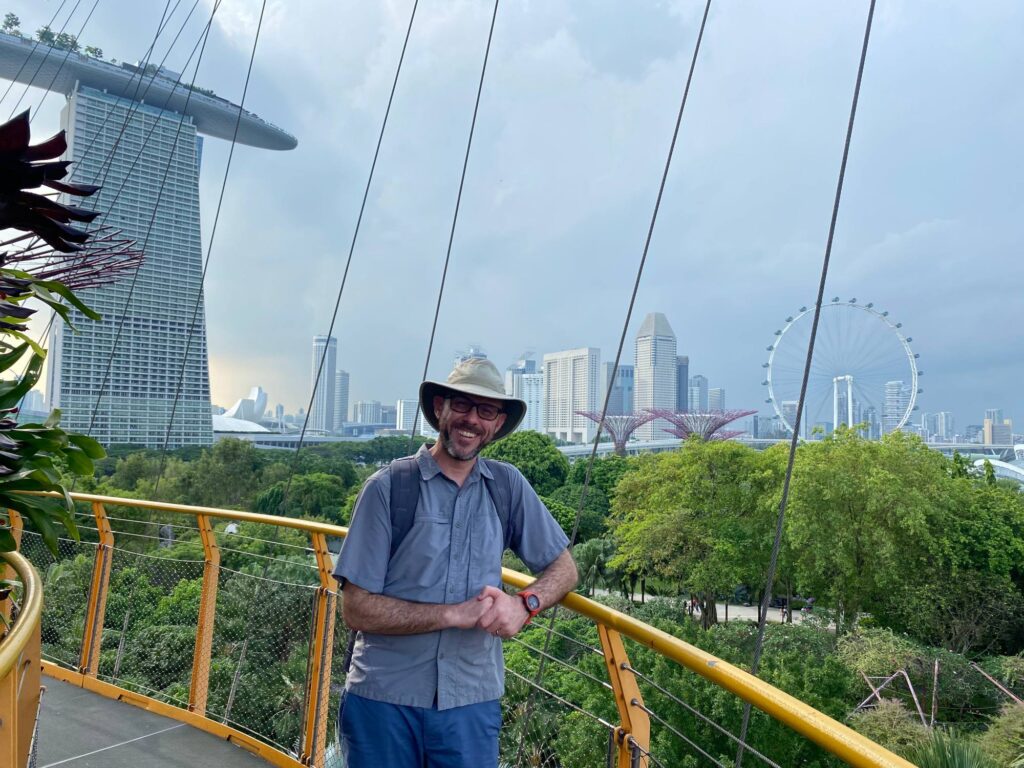
The post Deep Dive with Adam Way appeared first on Blog.
]]>The post Deep Dive with Avinash Srivastava appeared first on Blog.
]]>This week, we are highlighting our global director of urban analytics from our Buildings + Places business and how he and his team have used their skills to help develop The Point Utah, a 600-acre innovation district outside of Salt Lake City. This sustainable and smart community is being built on the former site of a correctional facility.
During his 23 years in the industry, Avinash has worked at the intersection of technology, strategic planning, and design. Guided by a holistic, data-driven approach and focus on resiliency, he’s delivered large-scale master planning and urban design, smart city strategy, energy, and infrastructure planning projects worldwide. Avinash is the chief architect of AECOM’s Sustainable Systems Integration Model (SSIM ) — an award-winning digital tool for strategic master planning at site, city or regional scales and the Triple Bottom Line Assessment (TBL
) — an award-winning digital tool for strategic master planning at site, city or regional scales and the Triple Bottom Line Assessment (TBL ) for comprehensive multi-criteria analysis for infrastructure and design projects.
) for comprehensive multi-criteria analysis for infrastructure and design projects.
Tell us about The Point Utah. How are you and your team making this new community smart and sustainable?
Our involvement in the project began during the design competition and has continued through each subsequent stage. We’ve helped shape the different strategies for our client, The Point of the Mountain State Land Authority, to create an energy efficient, net zero, “15-minute” community. We developed a sustainability plan and a smart city strategy and are currently advising the selected developers on implementation and design refinements.
Our work for The Point focuses on optimizing water for this desert location, and in creating a net-zero carbon ready community which emphasizes quality of life through incorporating smart city, smart mobility and smart energy technologies.
Using SSIM, we assessed the sustainability performance and measured the cost-benefit of different strategies for reducing air emissions (including GHG), water pollution, water and energy use, and taking advantage of on- and off-site renewable energy resources towards achieving a net-zero carbon ready development. In this way, we’ve shaped the project by bringing the different stakeholders on board to support specific pathways for achieving sustainability and smart district goals.
Based on the SSIM findings, our team has provided design recommendations related to specific aspects of transportation, building design, ecology, waste management and water management. These recommendations include building efficiency specifications and rooftop solar integration, and the integration of secondary water for irrigation and toilet flushing systems.
The Point is also a case study for our B+P Technical Academy, where we’re educating new AECOM professionals on the process and tools behind the sustainability strategies and exploring new ideas to further improve aspects such as embodied carbon.
What was a key challenge you faced while working on this project? How did you solve it?
This project represents a very progressive vision for transforming state-owned land. By turning disused space into an innovation district, it will foster technological progress for anchor institutions, such as high-tech start-ups, scientific and educational organizations, and medical innovators, while also providing mixed-use housing, office, and retail space.
The challenge is achieving the extremely high level of sustainability that is part of the client’s vision — creating a net zero community — inside the surrounding community. Local utilities were following current regulations and legislation for Utah, where goals for clean energy sources are modest. We worked closely with utilities and all other stakeholders to make sure the project had buy-in at every stage. The client group and the board were integrally involved in overseeing this project and were committed to achieving the sustainability goals but had real cost and other implementation constraints. We were challenged to explore a range of solutions that can work within these constraints.
We developed a tool to help visualize the outcomes of the various scenarios while measuring the capital expenditures and operational costs tied to each scenario. The tool was a digital twin of the project that functioned like a game board where you can take any system — water, energy, transportation — and turn dials to include or exclude different types of strategies, such as rooftop solar or water reuse, and see the performance and the costs reported out in real time.
You can also see whether you’re meeting those specific benchmarks or targets and at what cost, as well as who will bear that cost. What’s the developer’s investment? Which costs will be recovered and realized by future tenants? What if we did this instead? How can we use alternative financing? The digital tool helped us answer these and other questions and this was quite effective in building consensus with the stakeholder group.
We brought forward many innovative cost-reduction strategies, including bringing in independent energy providers as partners, reducing operating costs to residents and commercial building owners through rooftop solar, paying the cost of investment over time through a community-wide solar cooperative and promoting electric vehicle adoption in and around the community.
From a technical standpoint, our approach to reducing carbon in building and water systems considered innovative trends and sustainability certifications such as Living Community Challenge, EcoDistricts, Envision, LEED for Neighborhood Development and others.
How has this experience shaped your approach to future work?
This project validated our approach to achieving project transparency through practical, realistic engagement. Using simulations and modeling, we showed stakeholders the results of “what if” conditions and helped them reach a consensus.
We can also use this approach to meet our ScopeX carbon reduction targets and make our projects more effective, while reducing the time to arrive at consensus so our clients can achieve their goals. We’re hoping to adopt this process across AECOM projects. This is the aim of the B+P Technical Academy, which reaches people and projects around the world.
Another key takeaway is the power of collaboration. Our project team (including AECOM’s multidisciplinary team and other experts brought in by the client) has worked as a cohesive unit to create the best outcome for our client. The expertise at AECOM and our ability to tap into multiple disciplines and subject matter experts provided the foundation for this integrated approach.
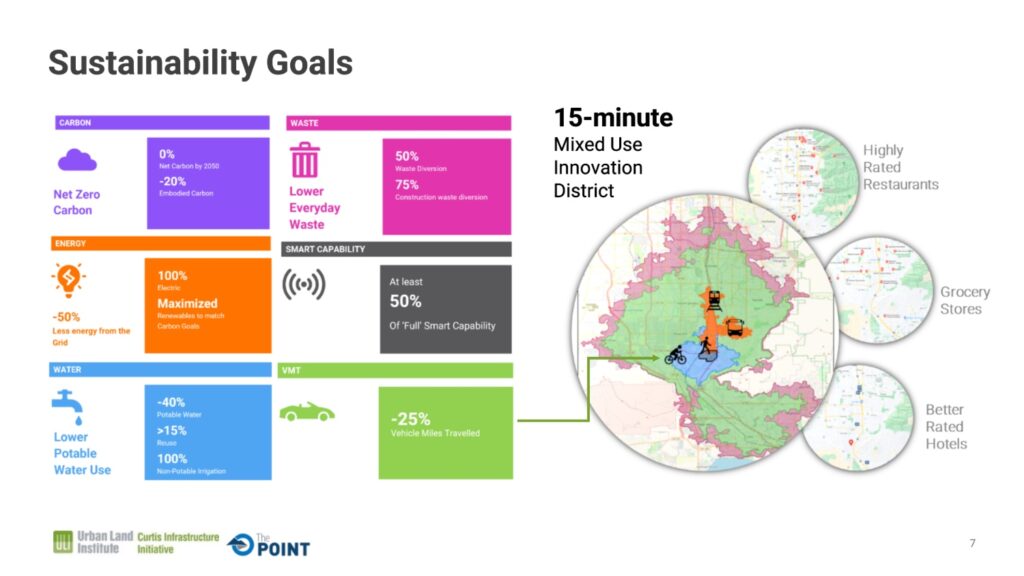
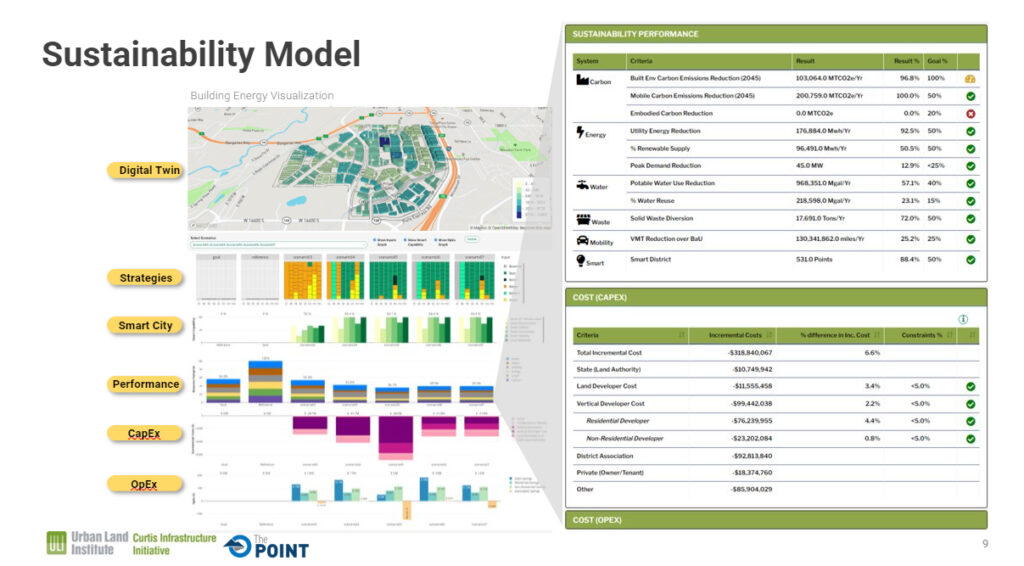
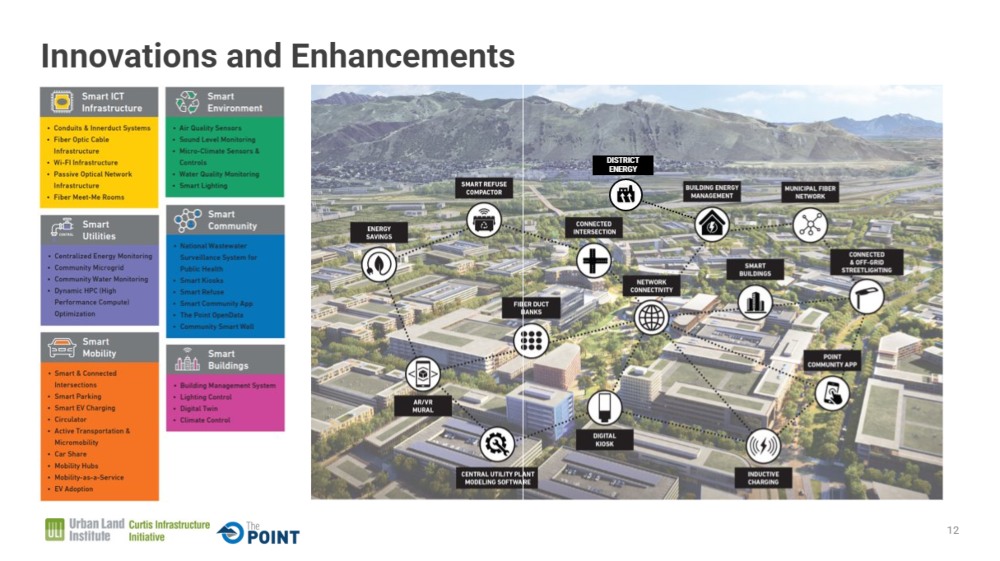
The post Deep Dive with Avinash Srivastava appeared first on Blog.
]]>The post Deep Dive with Neil Titley appeared first on Blog.
]]>This week, we are highlighting a technical director from our Environment business in the United Kingdom and Ireland, and how he and his team use their skills to deliver nationally significant solar and battery storage projects in the UK.
With over 20 years’ expertise in Environmental Impact Assessments, planning, stakeholder engagement and site design, Neil Titley has been involved in delivering work for a range of sectors, including major energy projects. He has worked on over 40 solar projects and 15 of England and Wales’ Nationally Significant Infrastructure Projects (NSIPs), including Europe’s largest proposed solar project, which will be developed in the UK. Internationally, he has supported several solar projects, notably the delivery of Kazakhstan’s largest solar farm and the first solar farm in the Caribbean.
You’ve delivered numerous solar projects during your career at AECOM. Which stand out to you, and how are they delivering a better world?
As the UK seeks to meet climate targets, developers are turning their sights to solar energy. I’ve had the privilege to contribute to this new push to build out solar farms, and I am proud of our team’s contribution to Net Zero UK.
With aspirations of reaching net zero by 2035, the UK Government’s Energy Security Strategy (April 2022) and The House of Commons Environmental Audit Committee report advises that solar must increase five-fold to 70 gigawatts (GW) by 2035. In the UK, we are seeing an increase in solar farm applications as it becomes commercially more viable. Alongside onshore wind, large-scale solar is now the cheapest new energy generating technology, helping to reduce bills and secure domestic supplies.
There are now many solar projects proposed in the UK that are classified as NSIPs requiring a Development Consent Order (DCO) in accordance with the Planning Act 2008 because of their scale (generating more than 50 megawatts peak electricity).
The solar NSIPs we are working on would generate between 250 megawatts (MW) to 1.5 gigawatts (GW) each and cover hundreds of hectares of land. Meticulous design, planning, permitting and public engagement are therefore critical to their success.
I have been involved in fifteen solar NSIPs now, requiring a multitude of skills, from extensive stakeholder engagement to careful planning and design, to minimise impacts on communities and respect environmental sensitivities such as archaeology and heritage. Not only are these projects helping with the energy transition to greener supplies, but they can also deliver impressive biodiversity net gains.
My most recent solar project achieved around 80 percent gains through the conversion of intensively farmed land to mixed seed grassland under the panels, with areas of hedge and tree planting for screening, which massively exceeds the UK government’s aspiration for projects to achieve a minimum 10 percent biodiversity net gain. This was a result of our ecology team working alongside our landscape specialists to plant native UK species mix in locations where they would help screen views of the project and maximise wildlife enhancement.
What are some key challenges your team faced while delivering these major projects? How did you solve them?
Solar farms are different to many other NSIPs due to their larger scale, greenfield location and often with landowners living local to the site, presenting a variety of challenges. Consultation with stakeholders needs to be approached differently, so my team helps by providing more information earlier than usual on the project to communities.
We also support some landowners with training to enable them to adequately answer the communities’ queries on a day-to-day basis. Environmental surveys required are extensive, but as we have a fully integrated team, we can schedule and coordinate these early to avoid delaying the DCO application.
Protecting nature is paramount — we support the layout of farms with nature positive outcomes in mind, proposing areas of tree planting for screening, hedges, green pathways for large animals such as deer, and locating new pathways for walkers, cyclists and horse riders during operation.
Our involvement in Longfield Solar Farm, for example, a 420-hectare site with battery storage in Essex, UK, has helped the developer reach a minimum 87 percent biodiversity net gain for this project, relative to the existing farmland through extensive planting of trees, hedgerows and grassland, and natural habitat restoration with ecological corridors.
As these solar projects are designed for 40 years of operation, the land can also be used for forms of farming such as grazing sheep and bee keeping. Most importantly, the land is returned to the owners in the same or better condition at the end of the project.
How has AECOM enabled you and your teams to cultivate the expertise needed to deliver solar projects — and future work like it?
AECOM is involved in many of the UK’s large-scale solar NSIPs, including six in the public domain, while supporting several developers to identify suitable sites for solar before preparing a DCO application.
Our multidisciplinary team is currently delivering environmental, planning, stakeholder engagement, land referencing, and layout design services for over 4 GW of solar NSIPs, which include battery storage to provide grid resilience, and over 10GW of solar overall. Some of our recent solar projects in the public domain, all with battery storage, include:
- Sunnica Energy Farm (980-hectares)
- Longfield Solar Farm (420-hectares)
- Gate Burton Energy Park (650-hectares)
- Tillbridge Solar Farm (1,400-hectares)
- East Yorkshire Solar Farm (1,200-hectares)
- Fosse Green Solar Farm (988-hecatres).
As we have extensive experience working across many large-scale projects, we can integrate expertise and identify potential pitfalls early. We also bring a holistic approach as although I work in the early stages of solar projects to navigate the site, planning and environmental processes, our energy experts can carry projects on through to delivery to provide a full end-to-end service, ensuring effective grid connection and supporting the transition to net zero.
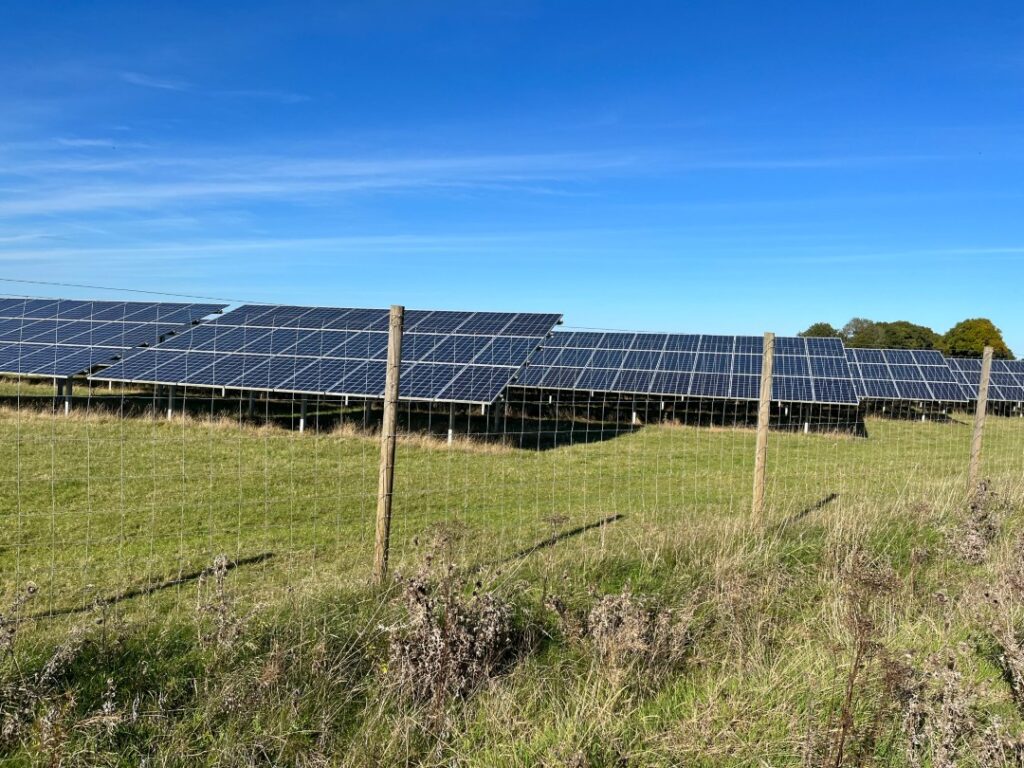
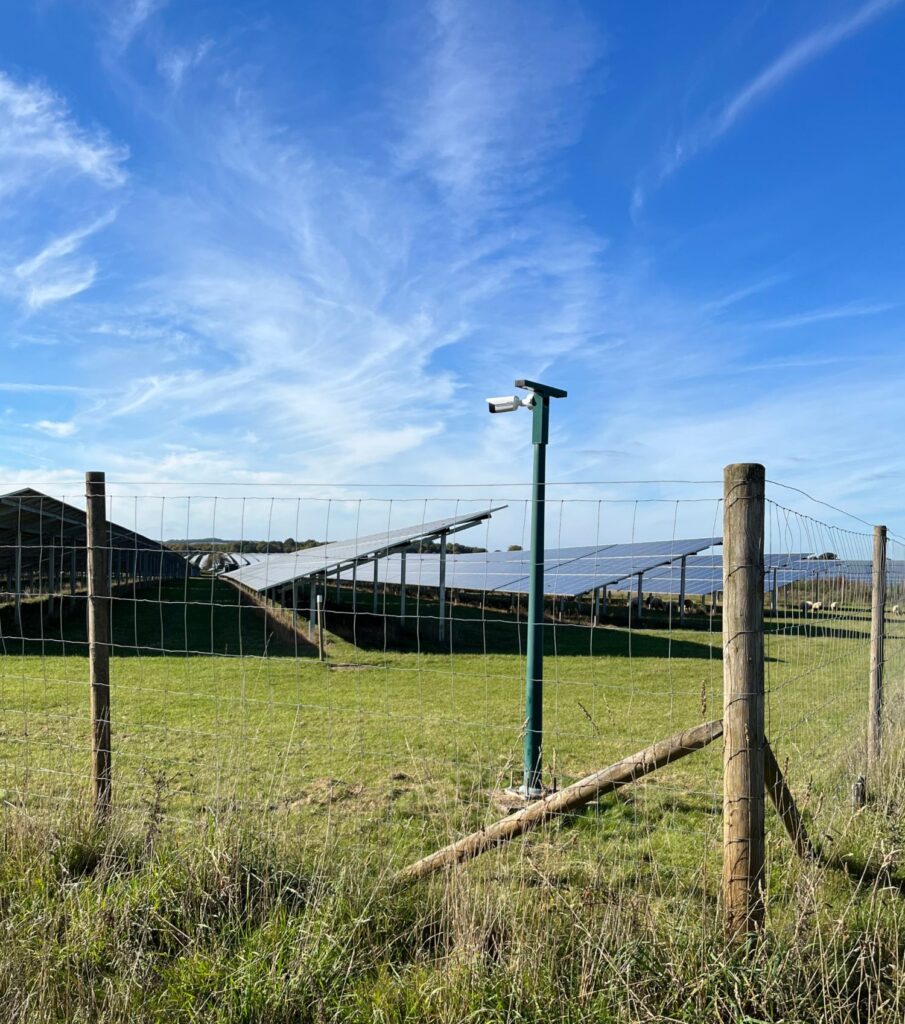
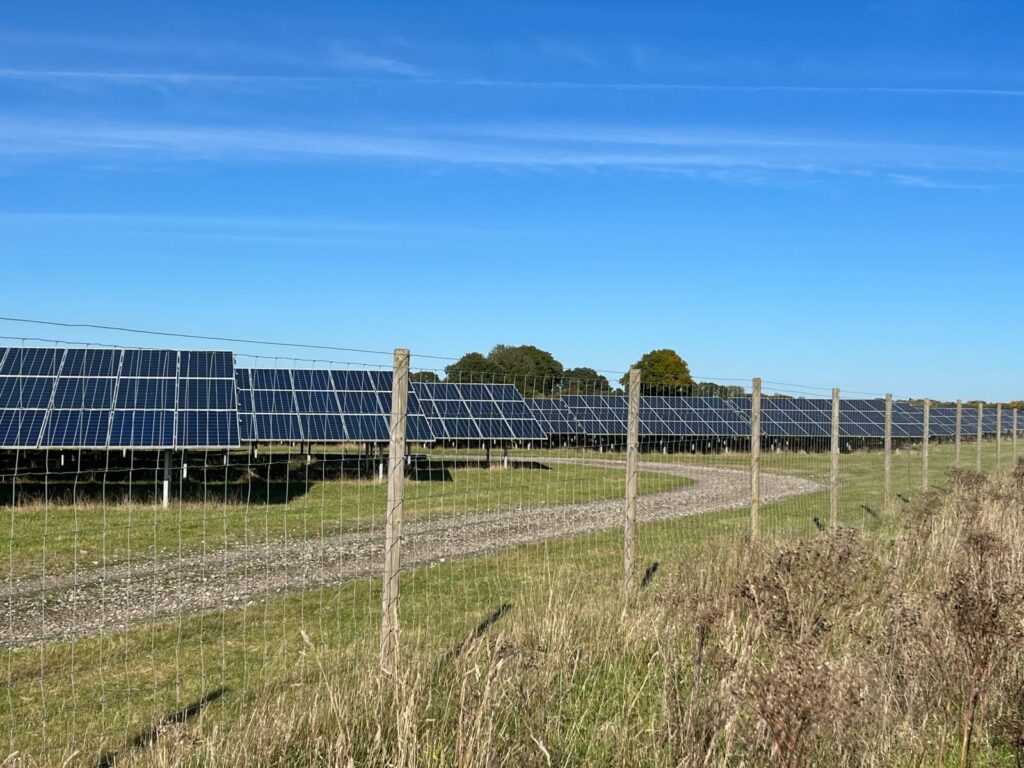
The post Deep Dive with Neil Titley appeared first on Blog.
]]>The post Deep Dive with Eric Bathras appeared first on Blog.
]]>This week, we are highlighting our Global Broadband Practice leader from our Buildings + Places Technology Solutions Group (TSG) and how he and his team used their skills to plan and recommend fiber-optic connectivity to unserved and underserved facilities, devices, homes and businesses across the entire state of Maine.
Eric and his team provide broadband solutions to a wide range of clients—electric cooperatives, local, county, and state agencies, global Tier 1 internet service providers, and emerging technology companies—all with different goals and aims. Whether he’s working with a community to expand broadband services or an electric cooperative to implement a smart grid initiative, his approach is collaborative and often cross-jurisdictional.
He and his team have helped design and architect connectivity for a smart corridor (“The Smartest Street in America”) for San Mateo County, California, which features air quality sensors and technologies to improve traffic, and pedestrian and bicycle safety; and a 2500-mile fiber-to-the-home network in Indiana and Cambria counties in Pennsylvania that is planned to serve 25,000 unserved and underserved homes together with a smart grid initiative for the area’s electric cooperative. In line with our Sustainable Legacies strategy, common themes in Eric’s projects are sustainability, resilience and improving social outcomes.
Tell us about Maine DOT’s fiber expansion strategy project and what led to it becoming a collaborative, statewide initiative?
I enjoy working on projects that involve a statewide footprint. Much of my background is in the public realm, so I also have a soft spot in my heart for projects that solve complex challenges for multiple public sector agencies at once.
On the Maine Department of Transportation (MaineDOT) project, we helped two state entities with different missions join forces to make high speed connectivity accessible to the DOT and universally available for unserved and underserved residences and businesses in Maine.
This project started with a transportation corridor and evolved into a statewide initiative. MaineDOT was interested in expanding its intelligent transportation system (ITS) devices, so it needed to evaluate the feasibility of designing and installing its own fiber infrastructure.
A couple of examples of ITS technologies are traffic cameras, remote sensors and message boards to enhance infrastructure resiliency and expand Internet of Things (IoT) infrastructure for smart traffic management. Since the DOT has historically used third-party data communication connectivity or wireless technologies to connect to the ITS devices and its own facilities, this is a first-of-its-kind project for them.
MaineDOT covers and is responsible for a large corridor footprint across the state and owns the public right-of-way, making it an ideal partner for the Maine Connectivity Authority (MCA), who is planning for large-scale broadband rollouts. With a mission to “advance digital equity for all Mainers,” one of the MCA’s biggest challenges is finding the ideal corridors that traverse close enough to people living and working in rural parts of the state.
The MaineDOT-MCA working partnership provides an opportunity for the two organizations to blend their missions and integrate their resources and approaches to optimize public funds. They’ve collaborated with several other public sector agencies and private sector service providers throughout the life of the project. Through community engagement, they’ve been able to effectively plan and design for a statewide fiber expansion.
Since the two entities own little to no existing fiber, we walked them through the challenges, and pros and cons related to owning their own fiber-optic infrastructure. Then, we focused on how and where to expand broadband access to help set both entities up for success and align with the guidelines of the Infrastructure Investment and Jobs Act (IIJA) and its goal to ensure every American has access to reliable high-speed internet. MCA is now in the beginning stages of its plan to expand fiber-optic communications out to people and communities that face greater barriers to connectivity.
What was a key challenge you faced while working on this project? How did you solve it?
The key challenge was breaking down and quantifying where and how DOT and MCA should build this new infrastructure within Maine. We created a corridor prioritization tool to identify and visualize “Goldilocks corridors.” Goldilocks corridors are found within local and regional broadband zones that demonstrate the strongest need and highlight the biggest gaps in broadband service and availability. They also contain ideal site candidates in terms of federal funding and fiber optic connectivity.
The Goldilocks zones match and conform as the top Broadband Equity, Access, and Deployment (BEAD) Program and agency prospects to serve existing or future transportation device locations, community anchor institutions (CAIs), and unserved and underserved households and businesses.
Pairing up the communities’ needs and the Goldilocks corridors for expanding broadband access to rural unserved households and businesses can improve the quality of life for citizens and foster economic development in towns and neighborhoods.
Using this concept and tool, we’ve helped MaineDOT and MCA find the “sweet spots,” and illustrate where available funding can serve the largest number of eligible devices, end users and CAIs along or next to those key corridors. CAIs play a crucial role in closing the “digital divide,” by expanding both broadband access and adoption in communities.
IoT connectivity provides smart traffic management, improves safety, mitigates sustainability challenges and enables more efficient resource management. Expanded fiber will also be key to future technologies such as Connected Autonomous Vehicles (CAV) and electric vehicle charging stations of the future.
We also created a cost-benefit tool to assess public and private investments in connecting sites along these corridors. Using this cost-benefit tool we’ve been able to help DOT and MCA justify the dollars invested, quantify the investment, and understand the potential grant match percentages needed to execute a future project as well as understand the value of their right-of-way.
How has this experience shaped your approach to future work?
“Dig once” is what the industry calls using a single infrastructure project to satisfy many different infrastructure initiatives. A key takeaway of this project was our recommendation to Maine to form a statewide Broadband Working Group (BWG). The BWG can help facilitate partnerships with other agencies and find shared needs when it comes to planning broadband expansion across Goldilocks zones to help enable access to broadband services at the lowest possible shared cost.
A thoughtfully planned transportation project can coalesce agencies, facilitate partnerships, put into practice a “dig once” policy and drive broadband deployment in unserved and hard to reach areas of a state. Also, using digital tools to find the Goldilocks corridors and zones proved to be a fantastic way to crystallize an idea for expansion into a concrete and practical picture that clients can understand, quantify, promote and gain the most consensus for shared broadband adoption.
The post Deep Dive with Eric Bathras appeared first on Blog.
]]>


